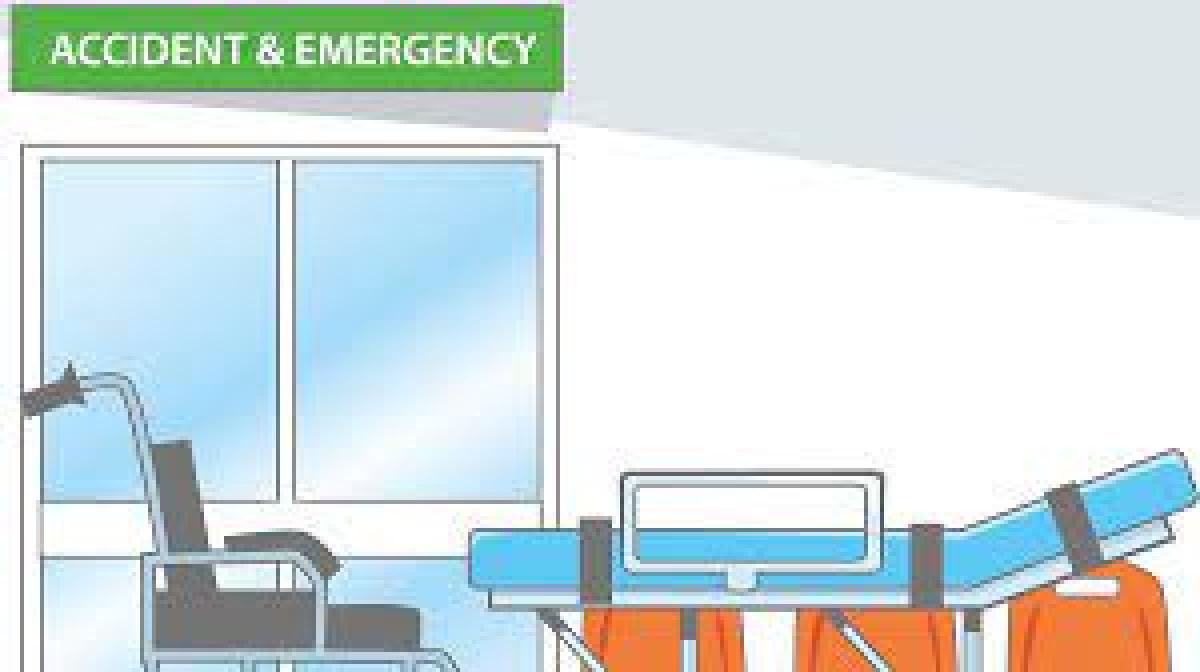There are many reasons why you might need to go to the hospital – if you fall off your bike and break your arm, or if you have asthma and have trouble breathing, or if you become dehydrated and need IV fluids, or need to have surgery to take out your tonsils.
It may seem a little scary to go to a hospital, but doctors, nurses, and other hospital workers are there to help people who are sick or hurt feel better.
So what happens inside a hospital?
Admissions
Sometimes, your doctor decides you need to be admitted to the hospital (that means you will stay overnight). He or she either needs to find out about something going on inside your body or has decided you need special medicine, surgery, or other treatment for a health problem. Your doctor will call the hospital to tell the staff that you’re coming, and you will go to the admissions office to check in.
Another way that kids might be admitted to the hospital is through the A&E.
You might go to the A&E if you are feeling very sick or have been injured, especially if your doctor or parent feels that you need medical attention right away. There, the doctors and nurses will take care of you and help you feel better. If you need to stay overnight at the hospital, someone from the hospital staff will take you and your parents to your hospital room.
When you go into the hospital, you will probably see your mom or dad fill out a lot of different papers. It’s important for the hospital to have your name, address, phone number, birth date, and other information, like if you take any medicines or have any allergies. You might be asked a lot of questions (sometimes again and again) like your name, your birthday, and if you have pain. If you don’t understand a question, it can help to ask your parents — or the doctor or nurse taking care of you — to explain.
The ward
Once you’re in the hospital, you may have a room all to yourself or you might share one with other children. Your room will have a bed, usually with buttons to push that will make the bed move up or down. A curtain can be pulled around your bed so that you can have some privacy while you’re resting or changing clothes. There are usually lights that you can turn on and off, and there is a special button to push that will call the nurse if you need anything. You’ll probably have a bathroom in your room.
Many hospital rooms have a TV and a telephone to help you keep busy while you’re in the hospital. If you’re going to be in the hospital for a little while, you can always bring things that remind you of home, like pictures of your family, stuffed animals, books, or toys — or even put up favourite pictures or posters on the wall around your bed. You may want to bring your favourite pillow and blanket to be more comfortable.
Hospital People
You’ll meet lots of people in the hospital, from the moment you arrive until you’re ready to leave. You might meet as many as 30 people just on your first day!
You’ll meet nurses who will help to get you settled and show you around the hospital floor so you’ll know where things are. While you’re in the hospital, nurses will take care of you day and night. They’ll check on you throughout the day to see how you’re feeling and if you need anything to be comfortable. Every few hours, they’ll check your temperature, blood pressure, heartbeat, and breathing. Nurses will also bring you any medicines you may need while you’re sick.
You’ll also see plenty of doctors. This might be your own doctor or a doctor who always works in the hospital and takes care of children. If you’re in a hospital just for kids, you’ll probably also see medical students (who are learning to be doctors) and residents (doctors receiving special training in taking care of kids).
You also might see a medical specialist — that’s a doctor who is an expert in a certain kind of medical problem or part of the body. For instance, a cardiologist is a doctor who specialises in taking care of the heart. Another example is if you have asthma and need to be in the hospital, you might see a lung specialist or allergist who will help you with your breathing problems.
Porters will take you from place to place; volunteers may bring coffee to parents or play games, read, and watch videos with you in your room or in the playroom; and therapists will show you how to use pieces of equipment, like crutches, if you need them.
Things to look out for around the hospital:
- Chairs
- Wheelchair
- Trolleys
- Signs – lots of them
- Notice boards
- Bed pans
- Stretcher
.
> Visit Professor Hallux’s Map of Medicine homepage
Professor Hallux’s Map of Medicine
Find out how to navigate Professor Hallux's Map of Medicine
More From Professor Hallux’s Map of Medicine



